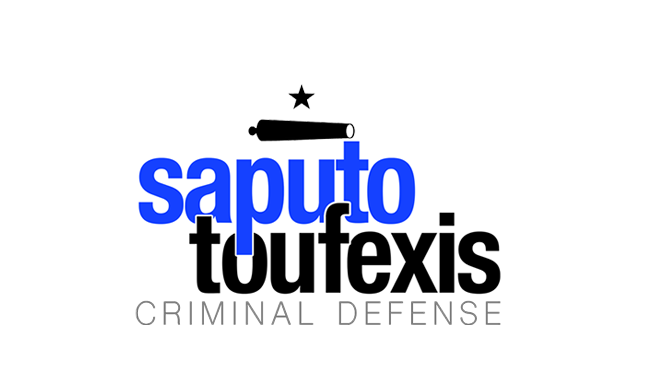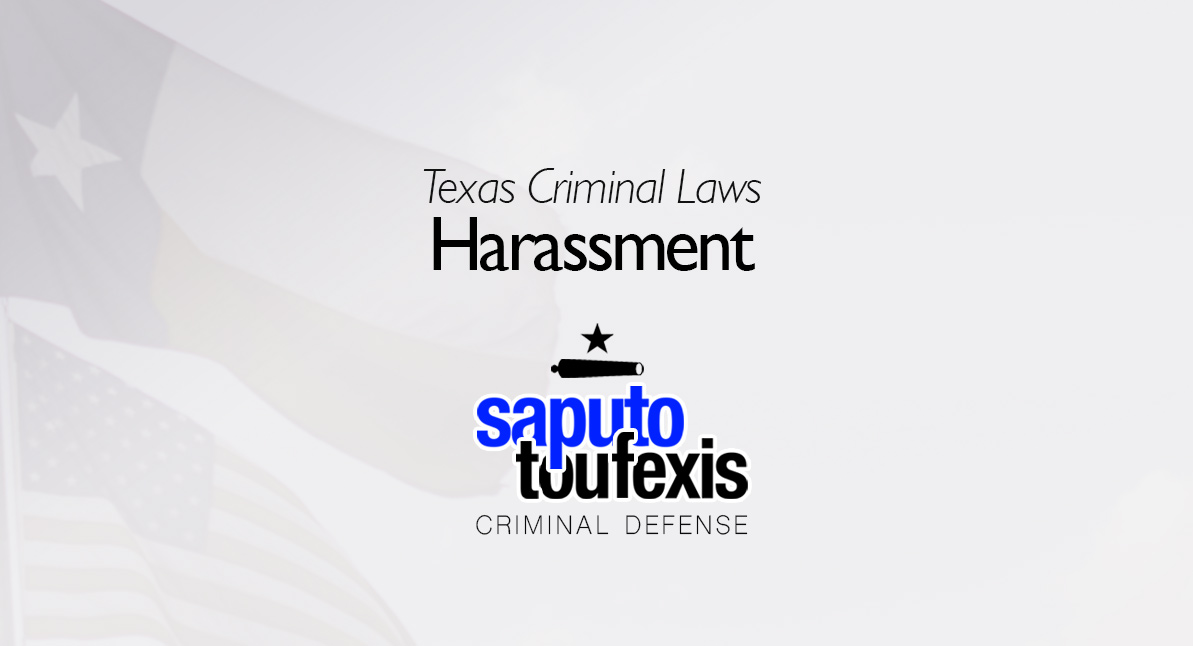The Texas Harassment law is a misdemeanor offense that outlaws certain abusive behaviors made with the specific intent to “harass, annoy, alarm, abuse, torment, or embarrass” someone.
FAQs about the
Harassment law in Texas
- What is the current Texas law about Harassment?
- What constitutes as obscene under the Harassment statute?
- What are electronic communications?
- Can I be charged with Harassment even if I am just joking around with another person?
- Is a charge of Harassment the same as a charge for Sexual Harassment?
- What is the statute of limitation for Harassment in Texas?
- What is the penalty for a Texas Harassment offense?
- Can you get probation for Harassment in Texas?
- What level of crime is Harassment in Texas?
There are seven now 10 (as of September 1, 2023) specific abusive behaviors listed in the Texas Harassment statute, and these behaviors are discussed in detail below. If the state’s attorneys want to convict you of Harassment, they will have to prove that you did one of those specific behaviors and that you had the specific intent to harass, annoy, alarm, abuse, torment, or embarrass. If the state believes that you harassed someone on more than one occasion, then the state might charge you with the more serious crime of Stalking.
Have you been charged with Harassment? Contact us today to discuss legal representation.
or Text or Call (888) 239-9305
A typical case of Harassment stems from phone calls, text messages or social media postings. But however the communication is made, the only outlawed behaviors are those listed in the statute, such as making an “obscene” remark, a threat, a false report that someone was injured or died, sending repeated annoying messages or making repeated annoying phone calls. The classic “prank call” could be considered Harassment under the Texas Harassment law.
The Texas legislature codified this criminal offense in Texas Penal Code Section 42.07. The legislature most recently updated this law in 2023, but other updates were made in 2021 and 2017.
The Penal Code classifies the Texas Harassment law under Title 9 “Offenses Against Public Order and Decency,” Chapter 42 “Disorderly Conduct and Related Offenses.” Learn more about the Texas offense of Harassment below.
What is the current Texas law about Harassment?
Texas law currently defines the offense of Harassment in Penal Code Section §42.07 as follows:[1]
(a) A person commits an offense if, with intent to harass, annoy, alarm, abuse, torment, or embarrass another, the person:
(1) initiates communication and in the course of the communication makes a comment, request, suggestion, or proposal that is obscene;
(2) threatens, in a manner reasonably likely to alarm the person receiving the threat, to inflict bodily injury on the person or to commit a felony against the person, a member of the person’s family or household, or the person’s property;
(3) conveys, in a manner reasonably likely to alarm the person receiving the report, a false report, which is known by the conveyor to be false, that another person has suffered death or serious bodily injury;
(4) causes the telephone of another to ring repeatedly or makes repeated telephone communications anonymously or in a manner reasonably likely to harass, annoy, alarm, abuse, torment, embarrass, or offend another;
(5) makes a telephone call and intentionally fails to hang up or disengage the connection;
(6) knowingly permits a telephone under the person’s control to be used by another to commit an offense under this section;
(7) sends repeated electronic communications in a manner reasonably likely to harass, annoy, alarm, abuse, torment, embarrass, or offend another; or
(8) publishes on an Internet website, including a social media platform, repeated electronic communications in a manner reasonably likely to cause emotional distress, abuse, or torment to another person, unless the communications are made in connection with a matter of public concern.
Subsection (a)(8) above was added by the legislature in 2021,[2] effective September 1, 2021.[3]In 2023, the legislature added two more items to this list, but both of them were numbered (9). One version of subsection (a)(9) is:[4]
(9) tracks or monitors the personal property or motor vehicle of another person, without the other person’s effective consent, including by:
(A) using a tracking application on the person’s personal electronic device or using a tracking device; or
(B) physically following the other person or causing any person to physically follow the other person.
Another version of subsection (a)(9) enacted by the legislature in 2023 is as follows:[5]
(9) makes obscene, intimidating, or threatening telephone calls or other electronic communications from a temporary or disposable telephone number provided by an Internet application or other technological means.
Also in 2023, the legislature enacted a subsection (e) that creates a legal presumption that a person did not give effective consent to the actor’s conduct if:[6]
(1) an application for a protective or restraining order against or with respect to the actor has been filed by or on behalf of the person under Subchapter A, Chapter 7B, Code of Criminal Procedure, Article 17.292, Code of Criminal Procedure, Section 6.504, Family Code, or Subtitle B, Title 4, Family Code, or an order has been issued against or with respect to the actor under one of those provisions; or
(2) the person is married to the actor and a petition for dissolution of marriage has been filed, or the person was previously married to the actor and the marriage has been dissolved.
For the purposes of this statute, electronic communications and obscene are both defined terms. These definitions are analyzed in more detail below.
What constitutes as obscene under the Harassment statute?
Under the Texas Harassment law, obscene means a “patently offensive description of or a solicitation to commit an ultimate sex act.”[7] Laws describing obscenity frequently use words such as “patently” to attempt to distinguish between protected free speech and something that goes beyond a “community standard.” The Harassment law’s use of the word “patently” here indicates that the description is something clearly offensive. This is not a perfect definition, however, as different people might see a line drawn at different places. Similarly, any two people might have a unique relationship that would make certain speech more appropriate than would be appropriate between two strangers.
What are electronic communications?
Electronic communications are defined as (bracketed language added by the legislature in 2017):[8]
signs, signals, writings, images sounds, data or intelligence that are transmitted over a wire, radio, or other electronic, magnetic or optics system. The term includes:
(A) a communication initiated through the use of electronic mail, instant message, network call, [a cellular or other type of telephone, a computer, a camera, text message, a social media platform or application, an Internet website, any other Internet-based communication tool,] or facsimile machine; and
(B) a communication made to a pager.
Harassment, therefore, may occur through email, instant or text message, phone, or through voice-mail.
Can I be charged with Harassment even if I am just joking around with another person?
You could be charged with Harassment even if you believe you are just “joking.” People are frequently charged when the person receiving the communication does not see the communication in the same way as the person making the communication. While the state must prove you had the intent to “harass, annoy, alarm, abuse, torment, or embarrass” someone, the difference between being annoying and “just joking” is a fine line. Eventually, a jury may make a decision as to what they believe your mind state was at the time that you made the communication.
Is a charge of Harassment the same as a charge for Sexual Harassment?
Harassment is not the same as Sexual Harassment. While the crime of Harassment includes a prohibition of certain sexually-charged messages, there is no “Sexual Harassment” offense under the Texas Penal Code.
However, the Official Oppression offense includes a prohibition against sexual harassment by public servants, and this statute defines sexual harassment as:
unwelcome sexual advances, requests for sexual favors, or other verbal or physical conduct of a sexual nature, submission to which is made a term or condition of a person’s exercise or enjoyment of any right, privilege, power, or immunity, either explicitly or implicitly.
“Sexual Harassment” is not a crime of its own in Texas, but sexual harassment may be a basis for a civil lawsuit by an employee against his or her employer as a violation of federal or state workplace laws.
What is the statute of limitation for Harassment in Texas?
As a misdemeanor, Harassment charges have a two-year limitations period.[9]
What is the penalty for a Texas Harassment offense?
Convictions for Harassment are punished as a Class B Misdemeanor, unless one of the enhancements apply. One penalty enhancement applies to a second or subsequent conviction for Harassment, in which case the offense is punished as a Class A Misdemeanor.
Additionally, the legislature created a new Class A Misdemeanor penalty enhancement that applied to subsection (a)(7) charges in 2017, and in 2021 the legislature expanded this new enhancement to subsection (a)(8) charges as well. Now, the Harassment offense can be enhanced to a Class A Misdemeanor if the offense was committed under Subsection (a)(7) or (a)(8) and:[10]
(A) the offense was committed against a child under 18 years of age with the intent that the child:
(i) commit suicide; or
(ii) engage in conduct causing serious bodily injury to the child; or
(B) the actor has previously violated a temporary restraining order or injunction issued under Chapter 129A, Civil Practice and Remedies Code.
Keep in mind that the state’s attorneys can also charge you with Stalking if they allege that you harassed someone repeatedly. This is not an enhancement, it’s a completely separate offense. The Texas offense of Stalking is a felony.
Can you get probation for Harassment in Texas?
The Texas Code of Criminal Procedure allows both judges and juries to grant probation for Harassment, and judges are also allowed to accept deferred adjudication plea deals.[11]
Note, however, that judges may not grant community supervision after a conviction if (1) the defendant used or exhibited a deadly weapon during the commission of the felony or immediate flight thereafter and (2) the defendant used or exhibited the deadly weapon himself or was a party to the offense and knew that a deadly weapon would be used or exhibited.[12]
What level of crime is Harassment in Texas?
The Penal Code classifies Harassment as either a Class A misdemeanor or Class B misdemeanor, depending on the circumstances.
Learn more about the penalty range for this offense in the section above.
Legal References:
^1. Texas Penal Code §42.07. This law is current as of 2024.^2. ^3. ^4. This version was enacted by ^5. This version was enacted by ^6. ^7. Texas Penal Code §42.07(b)(3) – “Obscene” means “containing a patently offensive description of or a solicitation to commit an ultimate sex act, including sexual intercourse, masturbation, cunnilingus, fellatio, or anilingus, or a description of an excretory function.”^8. Texas Penal Code §42.07(b)(1), as amended by ^9. See Code of Criminal Procedure 12.02(a)^10. Texas Penal Code §42.07(c)(2), as enacted by ^11. See Chapter 42, Texas Code of Criminal Procedure, Art. 42A.054, Art. 42A.056, Art. 42A.102^12 Art. 42A.054(b), Texas Code of Criminal Procedure








